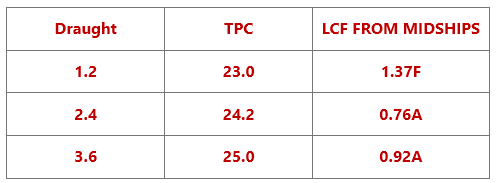Question Topic: Numerical Question
Q9. (a) Describe how thrust power is determined. (6)
(b) The following information relates to a model propeller of 400mm pitch:
Rev/Min
400
450
500
550
600
Thrust N
175
260
365
480
610
Torque Nm
16.8
22.4
28.2
34.3
40.5
(i) Plot curves of thrust and torque against rev/min
(ii) When the speed of advance of the model is 150 m / min and slip 0.20, calculate the efficiency.
Q10. A. List the components of residuary resistance. B. The following data are available for a twin-screw vessel:
V (Knots)
15
16
17
18
Epn (KW)
3000
3750
4700
5650
QPC
0.73
0.73
0.72
0.71
Calculate the service speed if the brake power for each engine is 3500Kw. The transmission is 3% and the allowances for weather and appendages 30%.
Page 16 of 40

